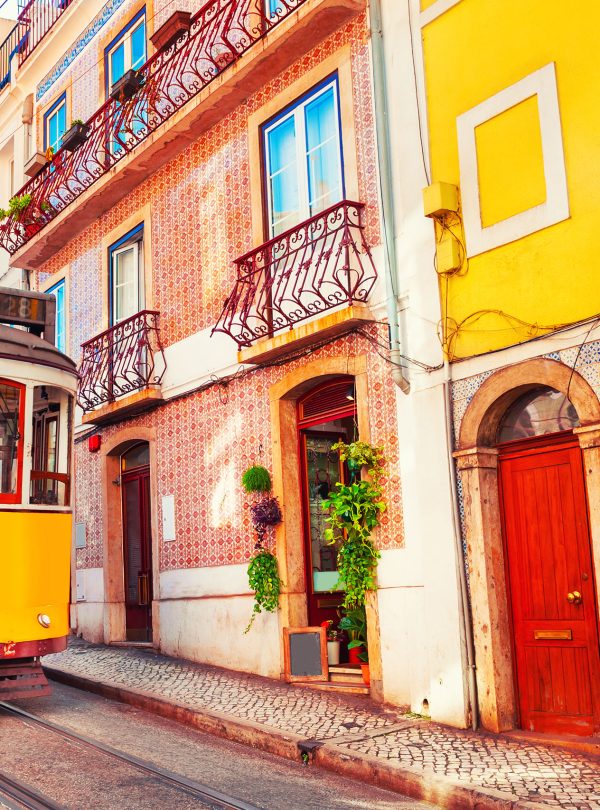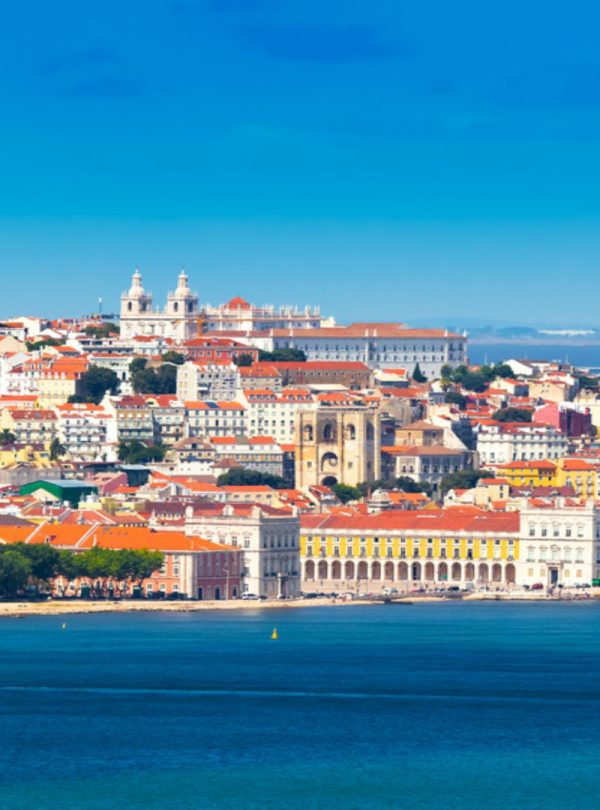Namely, discover the true essence of our Lisbon Tour.
The experience for those who wish to immerse in the city, thus we will explore past influences that shaped Lisbon. A city where tradition meets innovation, with its vibrant street life, historic sites, and beautiful riverside views, making it an enchanting destination for all.
Explore historic neighborhoods like Alfama, visit iconic landmarks such as the Belém Tower and Jerónimos Monastery, and enjoy panoramic views from São Jorge Castle
Este passeio privado terá início e fim na cidade de Lisboa, eventual dúvida poderá contactar-nos.
Our goal is for you to return feeling like a true “alfacinha,” the term given to the locals.
Lisbon Tour, the vibrant capital of Portugal, is a city full of history, culture, and charm.
Known for its stunning architecture, picturesque streets, and rich heritage, it offers a mix of traditional and modern experiences.
With its delicious food, lively nightlife, and welcoming atmosphere, Lisbon is a must-visit destination for travelers seeking an unforgettable experience.
Discover the best of Lisbon on a private and personalized tour! Explore the historic neighborhoods of Alfama, Baixa, and Chiado, visit iconic landmarks such as the Belém Tower and Jerónimos Monastery, and enjoy the famous Pastéis de Nata. With a local guide, learn about the city’s history, culture, and charm. Ideal for those looking for a unique and comfortable experience, with flexible stops tailored to your interests.
Beyond exploring the key tourist attractions, moreover, our journey aims to offer a clear insight.
Explore the best of Lisbon on a private Tour. Visit iconic landmarks like the Belém Tower, Jerónimos Monastery, and the historic Alfama district while enjoying breathtaking views of the city.
Lastly, join us on this tour, where you can dive into the history and culture, next you will discover fascinating stories that highlight the heritage! Take your doubts…
🗓️ Pricing:
| Number of People | Price | Price Person |
|---|---|---|
| 1 Person | 250€ | – |
| 2 People | 260€ | 130€ Per Person |
| 3 People | 270€ | 90€ Per Person |
| 4 People | 290€ | 72€ Per Person |
| 5 People | 320€ | 64€ Per Person |
| 6 People | 350€ | 58€ Per Person |
| 7 People | 370€ | 52€ Per Person |
| 8 People | 400€ | 50€ Per Person |
Itinerary
On our Lisbon Tour, we will depart from your hotel at the agreed time to visit the site where, in 1998, Lisbon hosted Expo 98 – the Parque das Nações. Inspired by the glorious era of Portuguese maritime expansion, the site showcases bold and functional architecture, including the impressive work of Calatrava, known for designing the Museum of Tomorrow in Brazil.
This modern Lisbon boasts efficient public transport that has significantly improved access to the city center. Additionally, it has become the office hub for several national and international companies. After the Expo ended, cultural and business spaces such as the Pavilhão Atlântico (now Meo Arena), the Oceanarium, the Vasco da Gama Tower, the Camões Theater, the Lisbon Pavilions, and the Lisbon International Fair (FIL), among others, were revitalized and seamlessly integrated into this new part of Lisbon.
The success was remarkable, transforming the eastern part of the city into a new neighborhood with a predominantly upper-middle-class population, also the youngest and most educated, according to municipal data. Deepen your knowledge while improving your Portuguese, remembering the nuances of European Portuguese.
Next, we will explore the oldest part of Lisbon, Alfama, walking through its narrow streets and alleys. This former Arab Medina, after the Christian reconquest in the 12th century, saw the Arab civilization relocate to another hill, giving rise to the Mouraria district. Discovering Alfama is an immersion in Portuguese authenticity. Fado, the most typical and charismatic music of Portugal, was born in this neighborhood, bringing with it a peculiar melancholy called saudade.
We will then arrive at the São Jorge Castle, one of the few remaining physical traces of Arab civilization in Portugal. After the visit, as we head towards Baixa, we will be mesmerized by the Lisbon Cathedral, a 12th-century Romanesque building. Here, between explorations, we will have time to visit the birthplace of Saint Anthony, the patron saint of matchmaking, proudly Portuguese.
Making this text more interactive involves emotionally connecting readers to Lisbon’s history and culture. Additionally, I’ve adjusted some expressions to more accurately reflect European Portuguese.
It’s time to climb the Lisbon hill and explore two neighborhoods that are so different yet similar at the same time. Bairro Alto, famous for its network of streets that, on weekends, fill with young people seeking a bohemian atmosphere, is contrasted by the Chiado district. Here, culture and art coexist harmoniously, housing most of Lisbon’s theaters and some of the oldest bookstores in the modern world.
Continuing our Lisbon Tour, we will cross Baixa, the area most affected by the great earthquake of 1755 that devastated the city. It’s crucial to understand the relevance of Pombaline architecture, which rebuilt buildings innovatively, widening streets and squares, and incorporating 18th-century earthquake-resistant techniques. Marquês de Pombal, the statesman responsible for the reconstruction, not only shaped the city but also the economic and social changes post-earthquake.
Crossing Avenida da Liberdade, we will reach Marquês de Pombal Square. There, next to Eduardo VII Park, we will explore the relationship and treaties between Portugal and England, understanding their importance for Brazil’s future, while enjoying a fantastic view.
After lunch, our Lisbon Tour continues to Belém, a true open book on the Portuguese maritime expansion. This area was home to the old shipyards and docks of Lisbon, from where fearless Portuguese explorers set sail in the 15th century, opening sea routes to India, Africa, and Brazil. This glorious past was celebrated and funded by the vast wealth that came from the colonies.
We will visit three emblematic monuments: the Belém Tower, the Jerónimos Monastery, and the Monument to the Discoveries. The last stop will be at the Pastéis de Belém factory, where we can savor this fabulous convent sweet that attracts millions of people every year. A delicious experience that complements the historical richness of this journey.
Depending on the time available during our tour, we can also visit Cristo Rei on the south bank of the Tagus River, crossing the 25 de Abril Bridge, inaugurated in 1966, one of the largest suspension bridges in the world. Cristo Rei is a site that attracts pilgrims from all over the world, offering undeniably one of the best views of Lisbon, with its highest point approximately 200 meters high.







